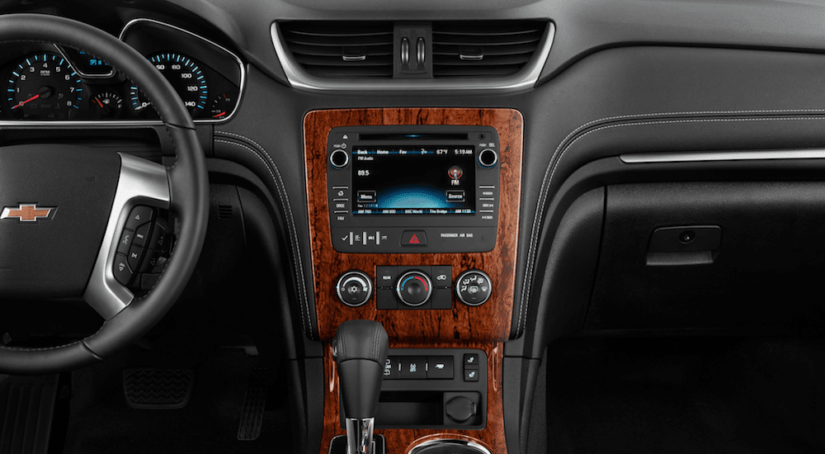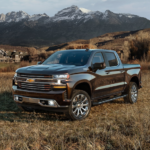Of all vehicle comparison pieces, crossover SUV offerings remain among the hardest to do. While the primary blame falls upon the level of inundation from every vehicle supplier, creating an over-saturation of the market, it’s not helped by the level of redundancy.
And by redundancy, I refer to the relative lack of distinctive innovation, resulting from each manufacturer competing to appear more innovative than the others. If the goal is to cater to the wide-range of expectations of families and leave no member’s needs unaddressed, it could be argued that manufacturers are running out of places to go.
With it all starting to feel a little bit “me-too,” let’s see how things look when we compare the 2017 Toyota Highlander vs 2017 Chevy Traverse. We’ll explain further, but based on this comparison the Toyota Highlander (LE Plus) is priced to start at $36,520 MSRP. The Chevy Traverse (LS) is priced to start at $29,930 MSRP base trim (making it worth noting that the base trim of the Highlander is priced comparably at $30,630 to start).
Performance
The Toyota Highlander makes a precarious choice in making a 3.5-liter V6 standard on all trim levels, except for the (base) LE, which is powered by a four-cylinder (with a V6 option). With the V6 being the prevalent engine spec, well based the review on the LE Plus. Delivering 295 horsepower and 263 lbs-ft of torque, the V6 (paired with an eight-speed automatic transmission) serves up 27 mpg (highway, 20 city).
In other areas of performance, the Highlander ranks well. With responsive steering, and above average braking, it also boasts impressive acceleration, confident handling, and overall smoothness of drivability. And in terms of towing capacity, when properly equipped, the Highlander pull up to 5,000 LBS.
The Traverse is powered by a 3.6-liter V6, paired to a six-speed automatic transmission. Delivering 288 horsepower and 270 lbs-ft of torque, the Traverse offers up an EPA-estimated 22 mpg (highway, 15 city).
With slower acceleration and average overall handling, the Traverse performs confidently but fails to shine within the segment. The exception is that it offers a higher-than-average towing capacity of 5,200 LBS, when properly equipped.
While the engine specs are pretty much neck-in-neck, we have to favor the Highlander in terms of overall performance. (1:0 Toyota)
Exterior Design
If i’m going to be honest, it’s worth mentioning that I’m hardly a fan of crossover SUV styling. Whether that makes me better or worse equipped to offer a subjective opinion is up for debate, but this is always my least favorite part of any crossover SUV comparison piece. It feels like the equivalent of comparing the aesthetics of two bars of white soap.
That said, the wagon-styling of the Highlander benefits from the aggressive look of its front fascia. The angle of the extended front headlights complements the open-faced grille, which feels more like a gaping maw than traditional grille styling tends to. So, while the profile does little to stir the senses, there is a hunger to the front-end that spices things up a little.
The Traverse on the other hand benefits from a more truck-inspired aesthetic. It may not be a particularly compelling design, but it steers away from the trappings of wagon-styling. It is, however, overwhelmingly uninteresting to look at. And while the the Highlander looks like it might open up and eat you, the Traverse fascia reads as traditional and as equally underwhelming as the rest of the design.
With all of that in mind, and understanding that tastes are subjective, the fair thing would be to score this one as a tie overall. But my eyes find the Traverse so boring that I’m going to give this one to Toyota as well. (2:0 Toyota)
Interior Design
The cabin of the three-row Highlander speaks to versatility. Cloth upholstery may be standard at the LE Plus trim level, but from seats to dash the material choices convey quality and comfort. As tends to be the case within the segment, the first two rows of seating provide comfort for adult passengers of almost any stature, while the rear seating may be better suited for children. Utility scores are average overall, with sufficient small item storage, as well rear cargo space.
The Highlander also scores well in terms of comfort, smoothness of ride, and elimination of road noise. Agreed upon as one of the quietest SUV offerings out there, it even draws comparisons to such luxury brands as Lexus.
Like the Highlander, the Traverse is on-point with its overall design and choice of materials. Making the best use of its dimensions, it boasts a spacious cabin which, in all fairness, remains one of the best in class in terms of comfort. For the same reason, there is also a wealth of storage space.
In terms of the forward cabin, both offer strong, clean designs with accessibility of controls. Both also offer a wealth of enhancements at higher trim levels. So, who comes out on top? It might be somewhat unfair for the Traverse to win based on spaciousness (considering its dimensions) but like I said, I’m not here to be fair. Congratulations, Traverse (2:1 Toyota)
Technology
In the Highlander LE Plus, the Bluetooth-enabled infotainment system is based around a high-resolution 8-inch touchscreen, and a six-speaker sound system. Along with Satellite and HD radio the system also offers CD, audio jack, multiple USB ports, and a variety of smartphone-connection apps.
Passengers will enjoy the zone climate control, and drivers will appreciate the power lift-gate when they’re working with heavy loads. The Toyota Safety Sense Bundle also comes standard, offering such driver aids as adaptive cruise control, forward collision mitigation, automatic emergency braking, and lane departure intervention.
The Traverse is built around a 6.5-inch touchscreen and six-speaker sound system. Offering a CD payer, auxiliary and USB inputs, the Traverse is Bluetooth-enabled. The optional OnStar service also provides the opportunity for 4G LTE Wi-Fi.
But comparing standard features, the Traverse comes out on top. We also like the inclusion of the safety features standard. (3:1 Toyota)
Results
While the Traverse remains another strong offering in Chevy’s diverse stable, the Toyota Highlander manages to offer drivers something more. Comparably priced, it comes down to personal preference, but our pick is the Highlander.



